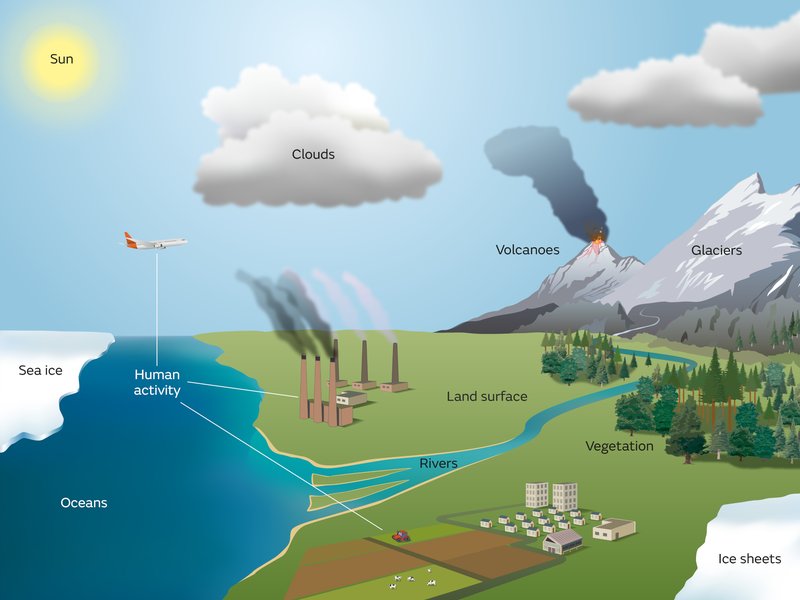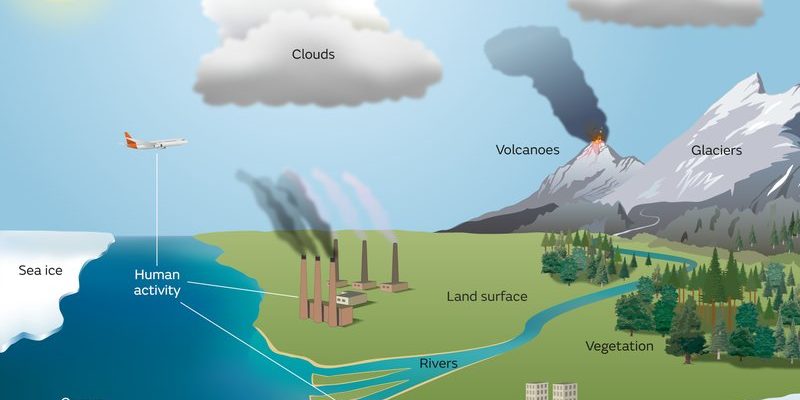
Picture a hammerhead worm lounging in its favorite warm, moist spot—like a sunbather under an umbrella on the beach. This image highlights how these worms prefer certain climates for survival and reproduction. So, let’s dig into how climate shapes the ranges of these curious creatures, whose habitats stretch across various environments.
The Basics of Hammerhead Worms
Before we dive into climate specifics, let’s get to know the hammerhead worm a bit better. These invertebrates belong to the genus *Bipalium*, and they’re notable for their flattened, ribbon-like bodies that can reach lengths of up to 15 inches (40 cm) in some species. The unique hammerhead shape gives them their name, making them easy to identify. They are mostly found in tropical and subtropical regions, but their presence is growing in other areas, too.
Hammerhead worms are carnivorous, and they primarily feed on earthworms and small invertebrates. What’s particularly fascinating is their ability to regenerate. If cut in half, both segments can regenerate into new worms! That’s like getting two for the price of one if you’ve ever had a garden mishap.
Understanding these basic traits helps us see why their habitat requirements are so crucial. They’re not just roaming around anywhere; they have specific needs that relate closely to their surroundings.
Temperature: The Key Player
Temperature is one of the most significant factors that influence hammerhead worm ranges. These worms thrive in warm environments, typically where the average temperature is between 60°F and 80°F (15°C to 27°C). Similar to how sunflowers turn toward the sun, hammerhead worms are drawn to warmer climates that foster their activity and reproduction.
In cooler regions, hammerhead worms struggle to survive. If the temperature drops too low, they may enter a dormant state, waiting for warmer conditions to return. During particularly cold spells, they might be found buried deep in the soil, much like how some animals hibernate to escape the chill.
With climate change leading to fluctuating temperatures, their ranges may shift, too. As regions warm, you might find hammerhead worms venturing into new territories. This movement can have ecological consequences, especially if they encounter native species in their new habitats.
Humidity and Moisture Levels
Humidity plays a critical role in hammerhead worm habitats. These worms prefer environments with high moisture content, which mimics their natural rainforests and tropical settings. High humidity helps keep their bodies hydrated, as they can easily lose moisture through their skin. It’s like how you might feel more comfortable sipping on a cold drink in a warm, dry room compared to a humid one.
In drier areas, you’re likely to find fewer hammerhead worms. Their delicate bodies can’t withstand high evaporation rates, so they seek out moist environments, such as leaf litter, decaying wood, or garden soil. You might even spot them after a rain, taking advantage of the wet ground to explore.
In contrast, overly saturated conditions can also be a problem. If their habitats become waterlogged, hammerhead worms can drown. Finding the sweet spot of moisture is crucial for their survival.
Geographical Distribution
Hammerhead worms have a varied geographical distribution, primarily found in tropical and subtropical regions. You’ll encounter them in places like Southeast Asia, the Caribbean, and parts of South America. They’ve also made their way into temperate regions, likely due to human activities such as gardening and landscaping.
Interestingly, some species have been spotted far beyond their traditional ranges, which prompts questions about how climate change influences their expansion. It’s possible that warmer temperatures and increased humidity are allowing these worms to adapt and thrive in previously inhospitable areas.
As hammerhead worms migrate, they can disrupt local ecosystems by preying on native species. This makes it vital for scientists and ecologists to keep an eye on their movements and understand the larger implications.
Impact of Human Activity on Hammerhead Worm Ranges
Human activities, like urbanization and agriculture, can significantly alter the habitats of hammerhead worms. As we develop land for cities and farms, we change the temperature, humidity, and overall ecosystem. You might think of a bustling city versus a serene forest—one is teeming with life, while the other usually feels more sterile.
For instance, in urban areas, heat islands can form, where buildings and pavement absorb heat, creating a warmer microclimate. This change may attract hammerhead worms, allowing them to thrive where they traditionally wouldn’t have been found. Conversely, pollution and habitat destruction can negatively impact their populations.
Additionally, the use of pesticides and fertilizers in agriculture can harm both hammerhead worms and their prey—earthworms—leading to imbalances in the ecosystem. Understanding these human influences is essential for developing strategies for conservation.
Climate Change and Its Future Impact
As our planet continues to warm due to climate change, scientists are closely monitoring how this affects hammerhead worm ranges. Warmer temperatures might seem like a boon for these worms, allowing them to expand northward. However, it’s not all positive. Rapid changes in climate can lead to unpredictable weather patterns and shifts in local ecosystems.
For hammerhead worms, this means their food supply could be impacted as well. As earthworm populations fluctuate due to environmental changes, so too might the hammerhead worm’s ability to thrive. This interconnectedness illustrates the delicate balance of nature, where one change can ripple through the entire ecosystem.
Moreover, with climate change comes the possibility of more extreme weather events. Heavy rainfall or drought can dramatically impact their habitats, affecting their survival. As we look to the future, understanding these dynamics will be crucial for both hammerhead worms and the ecosystems they inhabit.
Conservation Efforts and Awareness
Awareness about the importance of hammerhead worms and their ecological niches is key to their conservation. Educating the public about these often-misunderstood creatures can foster a greater appreciation for biodiversity. Gardeners can also play a role by creating environments that support these worms, such as maintaining healthy soil and reducing pesticide use.
There are ongoing research efforts dedicated to monitoring hammerhead worm populations and their habitats. These endeavors collect data to understand better how climate impacts their ranges and what that means for local ecosystems. Ultimately, protecting these worms is not just about preserving a single species; it’s about maintaining the health of our planet.
Understanding how climate influences hammerhead worm ranges helps us appreciate the intricate web of life around us. By taking steps to protect their habitats, we can play a part in ensuring that these remarkable creatures continue to thrive.
In the end, whether you’re a devoted gardener or just a curious observer, the story of the hammerhead worm offers a glimpse into the fascinating ways climate shapes the lives of our planet’s creatures. Each little impact we make can lead to bigger changes, reminding us that we all play a role in the environment we share.

